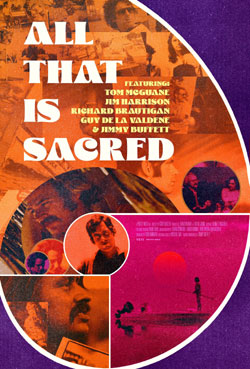|
I have
detailed
many of
the
cultural,
literary,
film,
and
musical
“scenes”
from
the
past.
They
are
important
because
they
often
spawn
deep
seismic
sociological,
political,
and
artistic
shifts
within
society
at
large.
Sometimes,
it
takes
decades
to
realize
the
full
impact
of what
actually
took
place
and the
influence
imparted.
Some
scenes
pick up
steam
and
become
a
movement
such as
the
early
20th
century
Modernist
Movement
in
American
poetry.
At
about
the
same
time,
the
Algonquin
Round
Table
in New
York
boasted
such
literary
and
theatrical
figures
such as
Dorothy
Parker,
George
S.
Kaufman,
Robert
Benchly,
Harpo
Marx,
Harold
Ross,
and
Tallulah
Bankhead.
In
Paris,
literary
heavyweights
Ernest
Hemingway,
F.
Scott
Fitzgerald,
Gertrude
Stein,
and
James
Joyce
gathered
for
drink
and
literary
endeavors.
Greenwich
Village
was the
home to
two
important
scenes
in the
1950’s
and
60’s
–
the
Beats
and the
folk
music
revival.
Who
wouldn't
want to
be part
of
those
scenes?
One scene that escaped me, until I saw a recent documentary All
That Is
Sacred, is the Key West Scene of the late 60’s to the mid 70’s.

Writer Carl Hiassen, has said, “Having all of that talent in Key West, that
was the equivalent of the Round Table at the Algonquin”. And that talent
included writers Jim Harrison, Russell Chatham, Tom McGuane, Richard
Brautigan, and musician Jimmy Buffett as well as the assorted hippies with
a laissez faire attitude. In a sense, bohemians, pirates, writers, refugees
and runaways were always drawn to Key West-before and after Ernest
Hemingway made the island famous. Truman Capote, Tennessee Williams,
and John Dos Passos also frequented Key West. But what bonded
McGuane, Harrison, Brautigan, Buffett, and the others was their love of
fishing and literature. They all achieved success very early in their
careers. At one time, Brautigan who wrote Trout Fishing In America, was
so famous that the Beatles were interested in meeting him.
The event that galvanized the Key West scene was the film Tarpon. In
1974, it centered on celebrity writers, Harrison, Brautigan, McGuane, and
tarpon fishing. Tarpon are highly valued as a saltwater game fish, not only
for their size but because of their fight and sensational leaping ability.
Jimmy Buffett performed the soundtrack. But the film had issues with
release and distribution. Rumors floated that the film was funded by drug
smugglers. It has since become a cult classic due to bootlegged copies.
By the end of the 70’s, the Key West scene, like all scenes began to come to
an end. There is no official ending, but its participants know when the gig
is up. The scene got dark with harder drugs, more and more tourists, New
York hipsters, and people mysteriously disappearing. McGuane, and
Harrison moved out West and restarted their careers. Jimmy Buffett
began his long journey to Margaritaville fame. Brautigan didn’t fare as
well, he committed suicide with McGuane supplying the urn for his ashes.
Buffet summarizing not only Key West, but all scenes said, “Everyplace I’ve
been, someone says you should have been here ten years ago”. Just as
pertinent would be Barry McGuire's answer to my question about the
Laurel Canyon 60’s-70’s singer-songwriter scene. He replied by telling me,
“The only way I can describe it, would be to pour a bucket of warm water
on a water colored painting, whip the painting around your head a half a
dozen times, and then what you would see would be my memories of that
ten year period. What more can I say”?
|